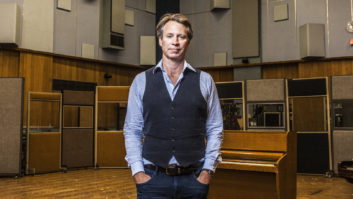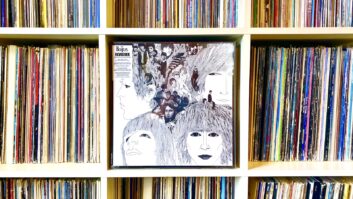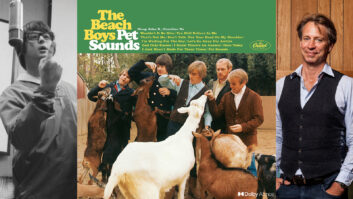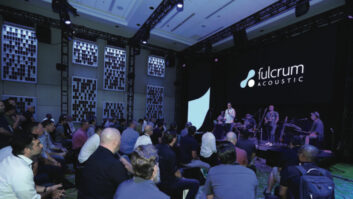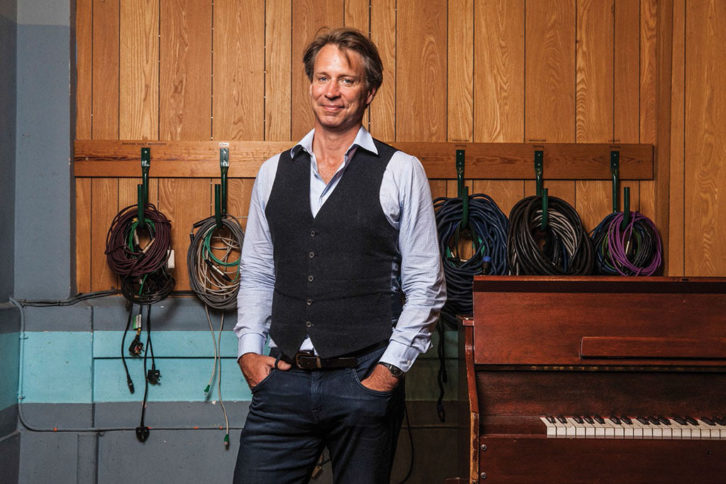
London, UK (March 1, 2022)—Apple Music has unveiled a new Spatial Audio edition of the Beatles compilation, 1, remixed for Spatial Audio with Dolby Atmos by Giles Martin. To mark the occasion, Martin sat down Monday for a press conference hosted by Apple’s Zane Lowe, where he shared the thought process behind the mixes; opined why remixing the Beatles in the new technology respects their legacy; revealed his father producer George Martin’s favorite work with the band; and much more.
First released in 2000, 1 serves up 27 of the band’s singles, all of which reached No. 1 in the US or UK charts. While some of the group’s later tracks have received immersive mixes in recent years as part of high-profile album reissues, the 1 collection marks the spatial debut for many of the Beatles’ earliest hits.
Those projects, like this one, were tackled by Martin, and despite growing up as the scion of the band’s producer, Martin doesn’t take his involvement with the Beatles and their work for granted. “I still find it hard to believe that that I get given this responsibility,” he said humbly. “I never thought in my life I’d be mixing or remixing Beatles stuff. I realize that when I walk into a room at Abbey Road and I can get a four-track, one-inch tape and it has ‘A Day in the Life’ or ‘Paperback Writer’ on it, and I can press play and I can hear it, how lucky I am and how many people would want to do this. How many people would want to be in that position? I shouldn’t have this privilege; everyone should have this privilege.”
Giles Martin Dissects The Sgt. Pepper 50th Anniversary Remix
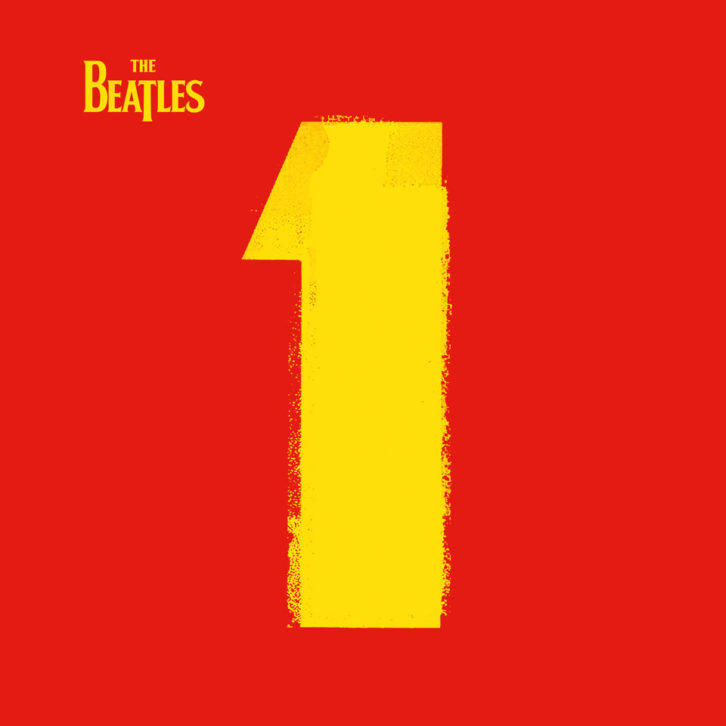
That said, working with the Beatles and their oeuvre was the family business for decades, and while it clearly wasn’t simply handed to the younger Martin, he certainly had the inside track for being considered for the role. “My dad, he started to lose his hearing and didn’t tell anyone that I became his ears, and that’s how I started doing what I’m doing,” said Martin. “He started working on the [mid-Nineties] Anthology project, and he hadn’t listened to The Beatles since they broke up. I came in and I listened to ‘A Day in the Life’ on a four-track tape machine; I was in a room upstairs, we pressed play and John was, like, talking to him—obviously years ago—and it was like he was in the room. There was no hiss, there was no crackle; it was literally like he was coming through the speakers. And I thought to myself, ‘That is magical. Records don’t get old; we get old.’ We get old and records stay the same age. John Lennon is the same age now on that recording as he was in 1967 when he was saying those words.”
Those words were said, of course, as the elder Martin and the Beatles recorded albums like Sgt. Pepper’s Lonely Hearts Club Band, which reframed how recording studios were used, changing them from places where live performances were captured under ideal sonic circumstances, to technological toolboxes used to create music and sounds.
“My dad was a futurist and loved technology…so he was always looking for a way of having great sound,” said Martin, “and what happened with The Beatles and my dad and other people around the world, they went “OK, how do we create worlds that don’t exist?” And since Sgt. Pepper’s [and] originally with ‘Tomorrow Never Knows’ and Revolver, they started doing this thing with ‘These aren’t live records. These are things you can only imagine in John Lennon’s head.’ He tried to capture what was in the head and put on a record—and that’s the evolution of sound. It’s not just technology; it’s imagination as well, and that’s key.”
Steven Wilson Knows Surround, Part 1
As the group, George Martin, engineer Geoff Emerick and others experimented and tried new methods of recording, classic records came out of Abbey Road’s Studio Two as if on a conveyor belt, yet each one was unique as it applied recording techniques in new and unexpected ways.
“[‘Strawberry Fields’] was my dad’s proudest work as a producer,” said Martin, “because it was two different takes at two different speeds [combined together]. He put the strings [in]…he created this thing. And it’s a lovely story—they didn’t speak for a while [in the 1970s] for different reasons, but John Lennon got in touch with him the month before [John] died, and my dad went to go see him in the Dakota Building. They were thinking about working together again, and John said, ‘You know, I’d love to just go back and record everything again properly this time.’ And my dad was like, ‘What?!’ And he goes ‘Come on, we probably could do a lot better this time around.’ My dad goes, ‘What about “Strawberry Fields?”’ and John went ‘Especially “Strawberry Fields!”’
“So the legacy and importance of that song for me personally is huge—and then you take the multitrack and you go, ‘OK, how do I make Spatial?’ To me, that song suits the world of Spatial Audio, it suits falling into it. Nothing is real—that’s what the line says in the song—and so [Spatial] suits it. When I was doing this work, that was the one where I remember…putting that into my AirPod Maxs and going, ‘This really works, this really works. OK, listen, guys, this is the reason why this technology should exist; “Strawberry Fields” is the reason why this should exist.’”
